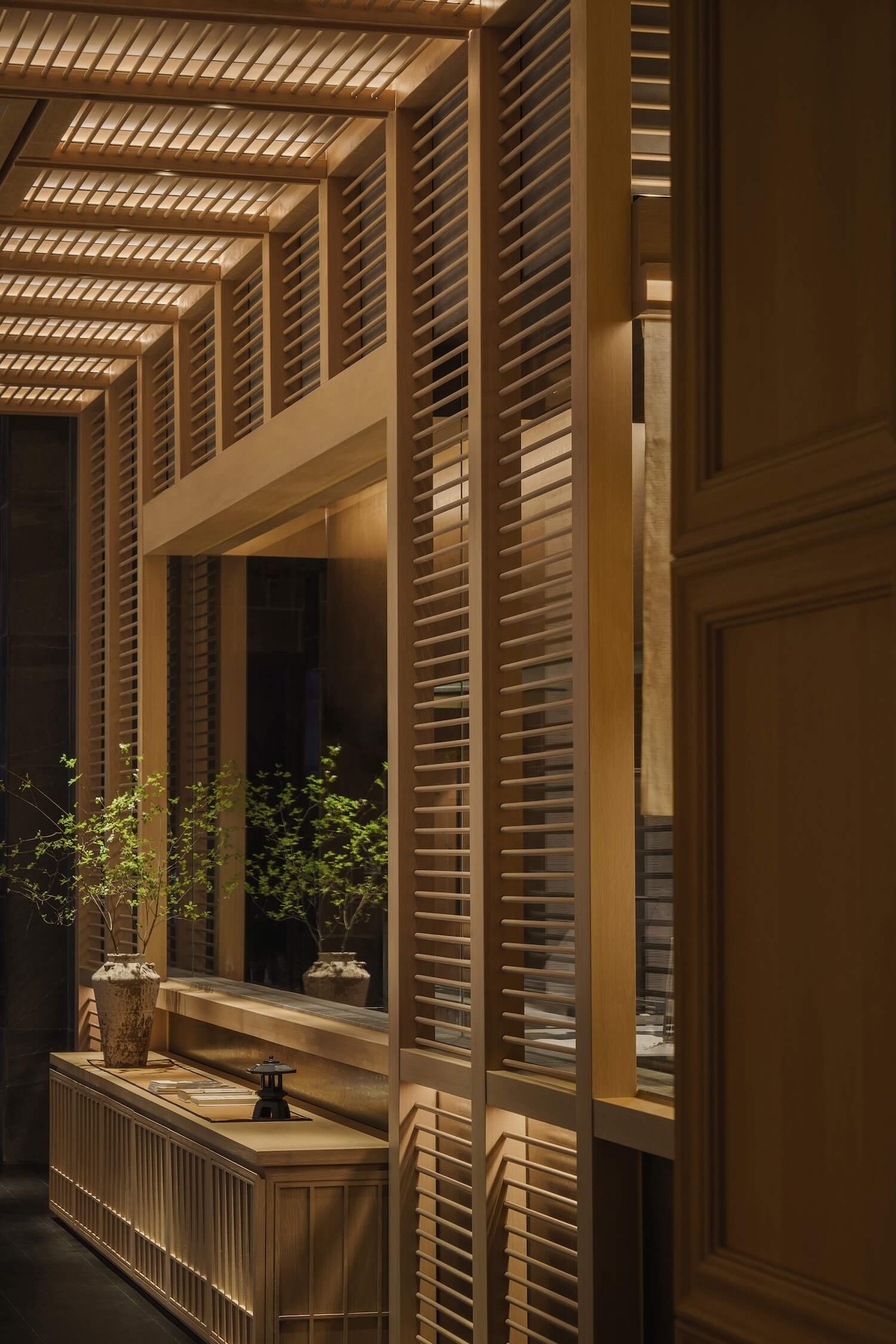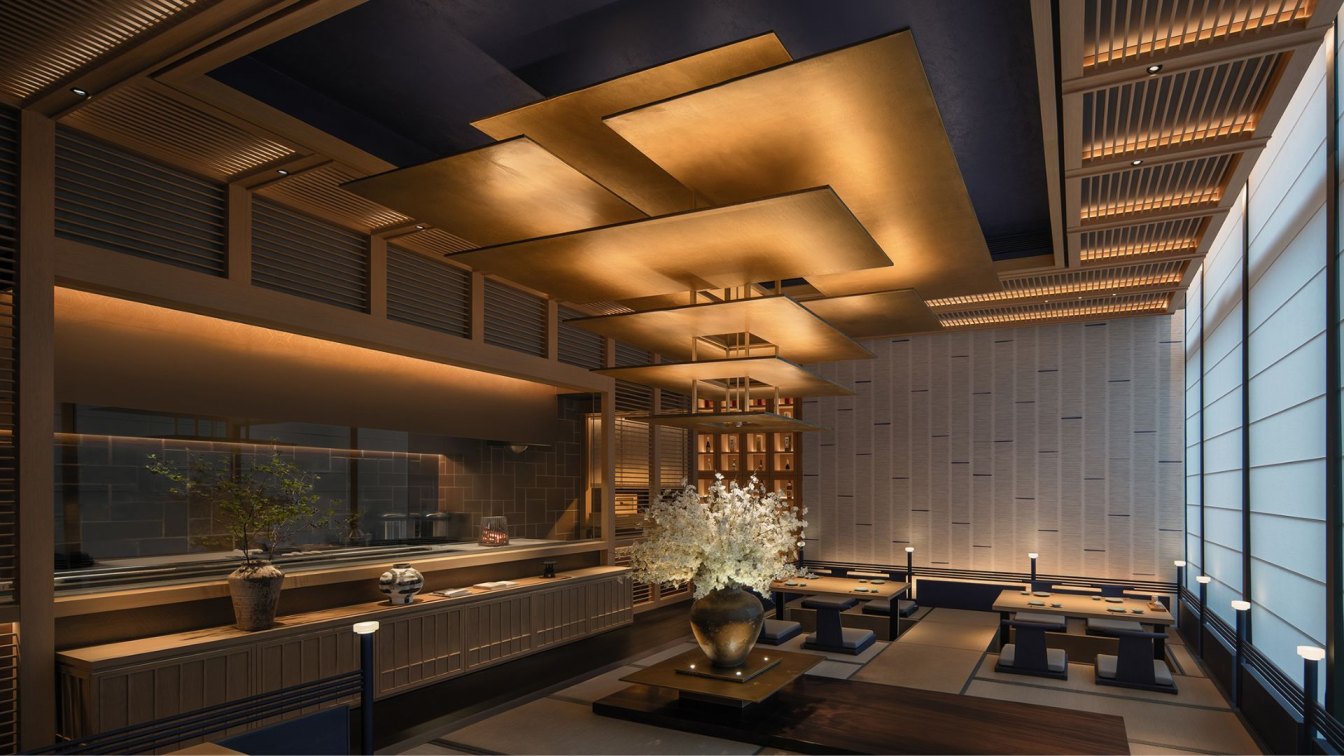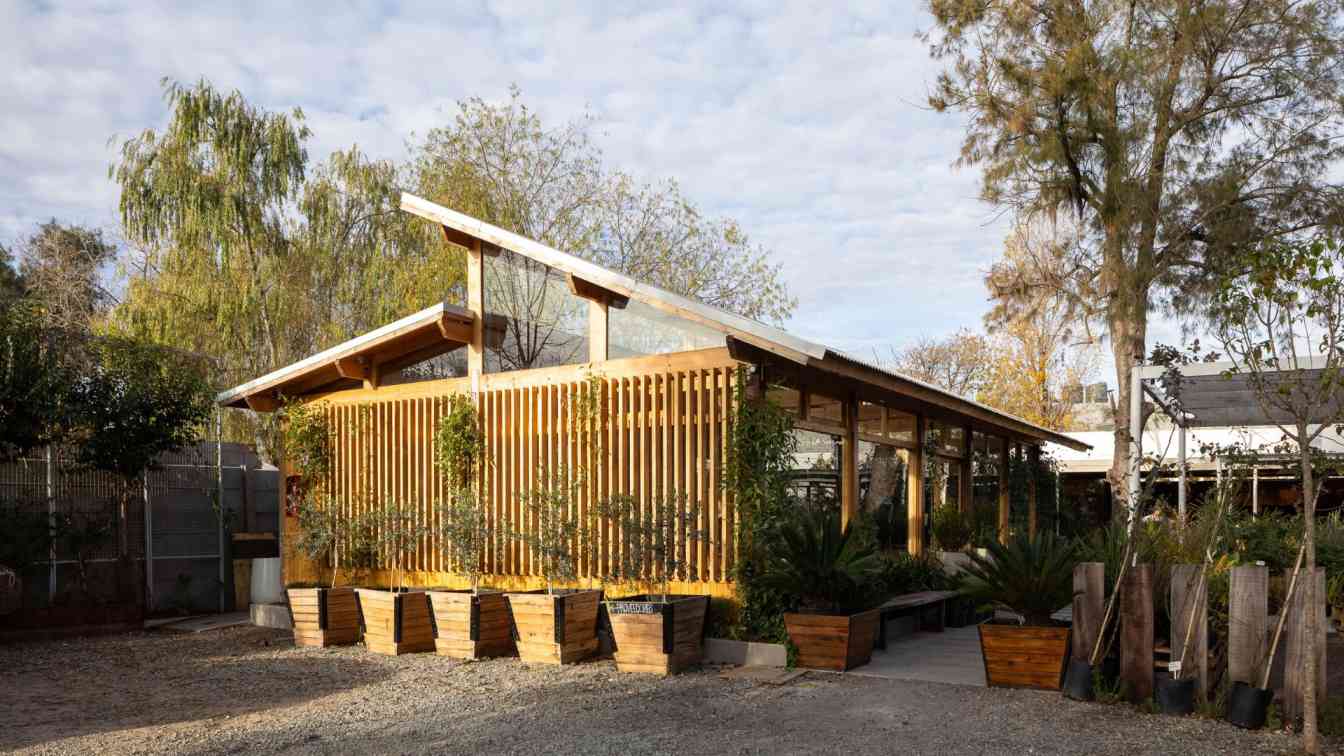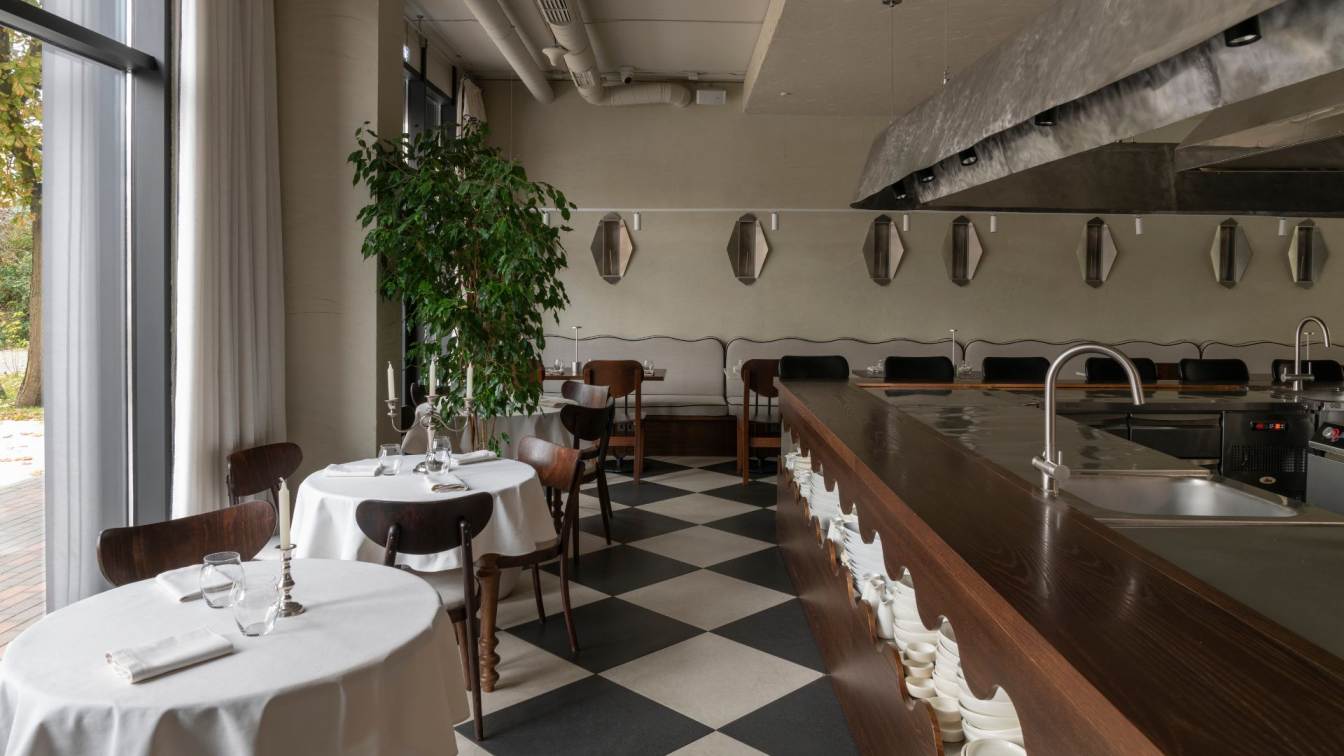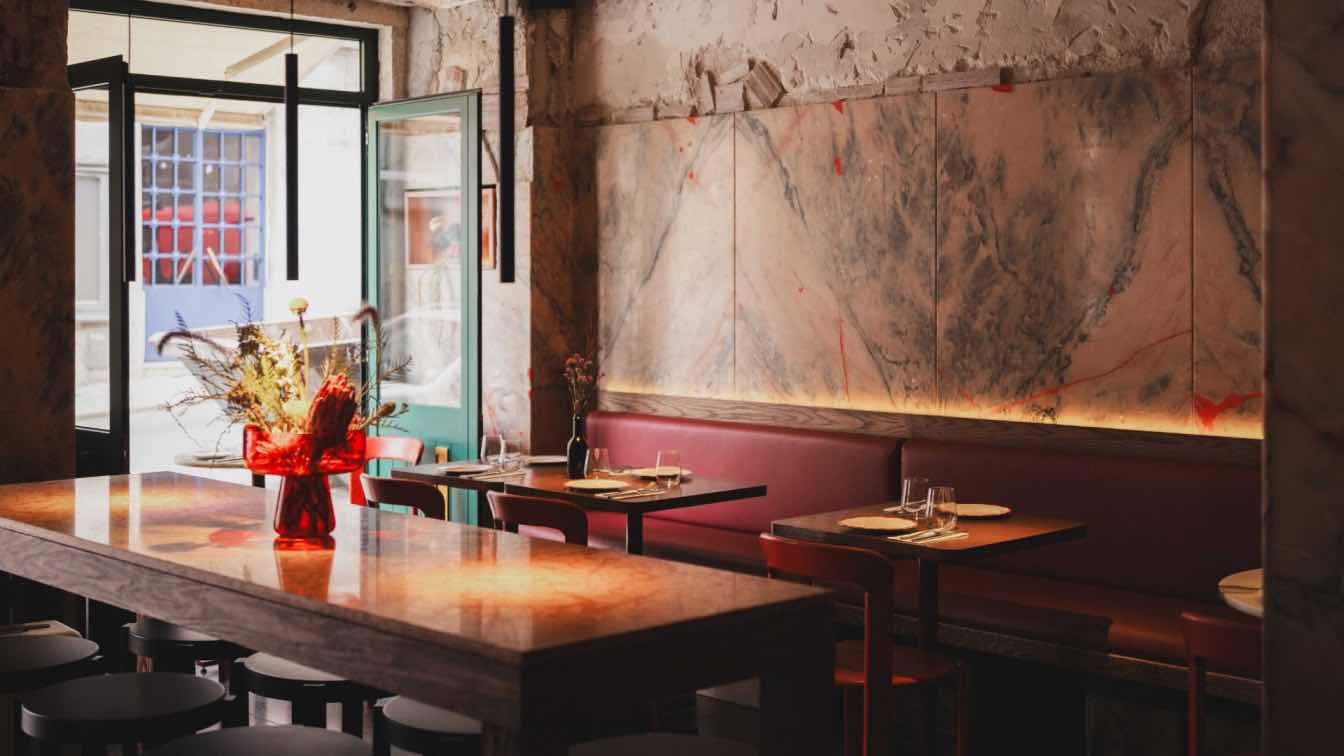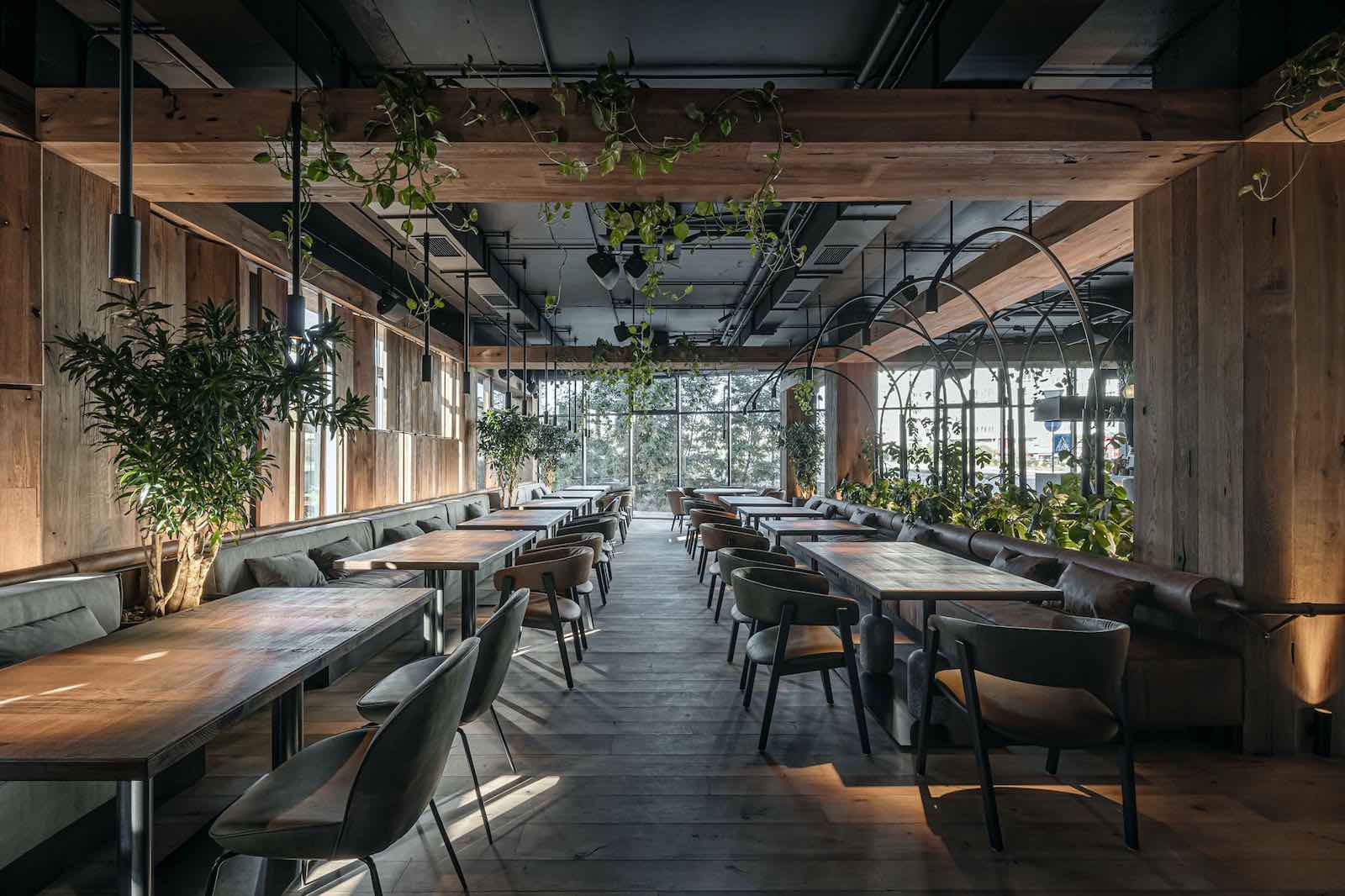FUNUN LAB: The Japanese cuisine is in extreme pursuit in the taste and ingredients. The experience of dining has also become an important component of Japanese aesthetics. The highest enjoyment of food involves the exchange of sensory experiences, where visual presentation complements the taste and the flavors. Both tastes and colours make up the eternal theme of aesthetic living.
Aumann, a grilled Eel rice, is one of the most famous dishes in the capital. The chief apprenticed under Itoh Chū who is the master of grilled crab. The cooking of Aumann has adhered to the traditional Kansai grilling technique since it was founded, emphasising utmost freshness in ingredients and the meticulous interpretation of flavors. It’s designer aims to create a here-and-now “context” based on space in which diners can not only taste the most authentic delicacies but also immerse themselves in the authentic local culture as if they were truly there.
On the basis of this dish, people can trace back to Kyoto, the center of Kansai culture.
Drawing inspiration from shrines, temples, gardens, and paintings of this ancient capital with a history spanning a thousand years, the designer combined these cultural icons and the essence of the cuisine brand. As a result, a unique space was created, seamlessly integrating food and culture through the design of spatial structure, materials, and scenes.

The Scenic Context
In order to allow diners to fully immerse themselves in this culinary art intertwined with time, the designer has applied the traditional Japanese architecture concept of "Teioku ichinyo" in the landscaping of the public space. The delicate balance of proportions between the courtyard and the building is switched, with the relationship between the guests and environment becoming the main spatial thread so as to bring flowing experience.
Stepping into the broad space of the lobby, the dinners will catch sight of the meticulously crafted golden installation hanging from the ceiling as if they saw the reflection of Kinkaku-ji in the water. The decoration was made from Kyoto's traditional gold forging technique with an antique style endowed by its natural textures. Instead of restoring the cultural icon directly, its design contains contemporary silhouette formed by minimalistic lines. With just a few strokes, it evokes a serene and ethereal atmosphere, as if a breeze from the wilderness, swaying branches, and the scent of moist moss all rush in the space at once.
Guests have an opportunity to closely observe the chefs as they grill the eel and cook on the portable hearth in the open kitchen, which is located parallel to the lobby on the opposite end. This creates an interesting intertextual relationship with the artistic installation hanging in the lobby. The craftsmen refine the taste of top-notch cuisine primarily through fire, reminiscent of the beauty of Kinkaku-ji. As the dish is completing, its aroma collides and connects, intertwining and ultimately resonating throughout the entire area.

The Physical Context
Inspired by the intricate street patterns of Kyoto's alleyways as a reference, the space designer completed the spatial layout. The overall design connects different dining scenes, ranging from open to intimate, similar to the flow of traffic space. This creates a rhythmic ebb and flow, sometimes light and lively, and at other times relaxing and stretching. The width of the walkways is precisely controlled to allow for comfortable solitary passage or cozy side-by-side movement, paying homage to the ambiguous and mysterious beauty of "yūgen."
The dining space in CBD, Beijing is shielded by a bamboo forest, creating a secluded realm temporarily disconnected from the outside world. The hustle and bustle of the busy streets are left behind in the courtyard. Within the dim and shadowy interior, meticulously grilled premium ingredients, paired with secret dipping sauces, unleash their flavors in the mouth, leading epicureans to transcend geographical and cultural boundaries, reaching the pinnacle of taste sensation.
The mental context
In terms of spatial decoration, the designer did not directly replicate or imitate the traditional Japanese residential architectural language in a one-to-one manner. Instead, they aimed to simplify and convey the spirit of traditional Japanese aesthetics through a more modern design language. This approach can be seen in the array-style entrance and the vertical wooden lattice within the interior. The sculptures adorning the space reflect the designer's restrained yet playful approach. A stack of five Daruma dolls becomes the focal point at the end of the corridor. Daruma, as one of Japan's most popular auspicious symbols, has an endearing and whimsical appearance. It looks like a drunken figure in an irregular form, and introducing such an image breaks the monotony and seriousness of the corridor, bringing a sense of relaxation akin to a gentle breeze passing through the space.

The sculptures custom-made by the artist for the private dining rooms are like cats frolicking and enjoying drinks in the rural fields of Kansai. With their childlike charm and simplicity, they traverse space and time, instantly transporting people from a high-end culinary restaurant back to the humble and nuanced moments of day and night.
The space incorporates various elements related to "paper," giving the facades a sense of vitality and breathability. In the lobby, the designer has created original wallpapers inspired by traditional Japanese patterns and motifs, perfectly setting the overall ambiance. The translucent DuPont paper used in the private dining rooms, paired with plants in the foreground, exudes a sense of elegance reminiscent of Yamamoto Baiitsu's ink scroll paintings. Just beyond the window is a bustling city scene, while indoors, there is a tranquil ambiance with sparse shadows, allowing for a natural transition between distant and intimate spaces and a delicately layered layout within a confined area.
The concept of "monoaware" is a core Japanese idea, which has been widely applied in art, literature, and various aspects of life. It encourages people to attentively observe and experience things in their daily lives, enriching their inner world through the expression of emotions and resonance. In this place, people can connect with the profound understanding of the vast world through the objective objects before their eyes. As time passes, they can truly appreciate the beauty of the space and marvel at the purity of the food's essence. This is precisely what the designer hopes to convey in the space.


















